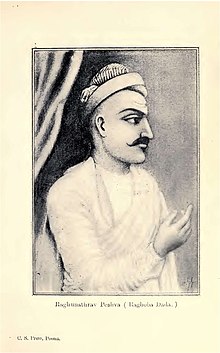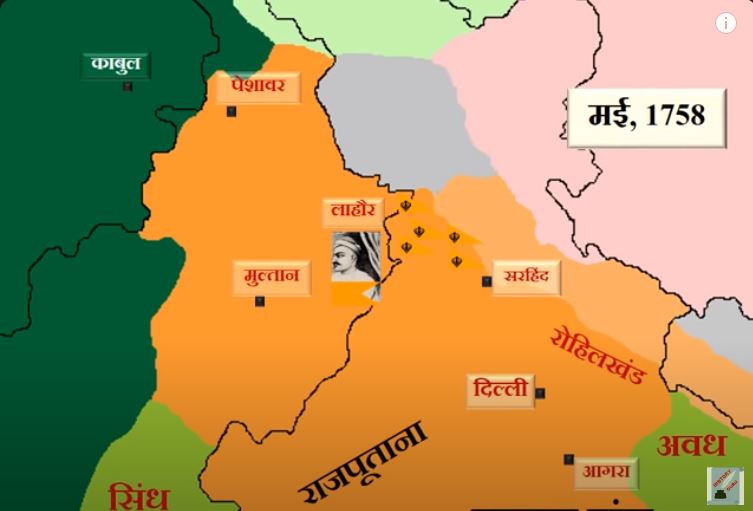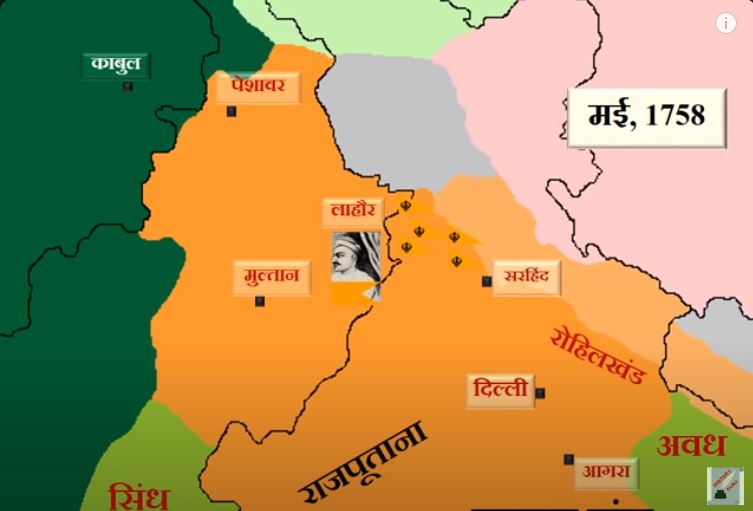The Marathas after establishing their hegemony over Deccan and most of central India tried to curb the power of Mughals at Delhi. Even during the tenure of the great Peshwa Baji Rao the Marathas had reached the gates of Delhi and had given their glimpses of power to the Mughal Emperor Muhammad Shah. However, the swift-moving cavalry of the mighty Marathas didn’t stop at Delhi.
During the reign of Peshwa Balaji Baji Rao, the Marathas added a significant amount of territories to their kingdom. They reached as far as Attock conquering Punjab, Multan, Peshawar, etc. The Punjab campaigns of the Marathas can be regarded as the setting of the background for the titanic battle of Panipat.
The recapture of Punjab and other region by Marathas is a heroic tale in itself. For centuries this region witnessed and suffered heavily from the barbarism of invaders from central Asia and Afghanistan. However, when the Marathas became active and a dominant political figure things took turns in favor of Hindus and Indians.
They reestablished the rule of Hindus over Punjab and other parts freeing people from pligty and misery of invading sultans. The credit for his achievement was given to a twenty-two-year-old youngster known as Raghoba (Raghunath Rao) who along with able leaders like Malhar Rao Holkar threw out the yoke of invaders from Indian territories.
Content
Ahmad Shah Abdali and his onslaughts on India
Known as the founding father of modern-day Afghanistan Ahmad Shah Abdali initially served under the banner of Nadir Shah’s army. The brutal invasion of Nadir Shah (1738-39) completely dismantled the Mughal power in the battle of Karnal. It was the first invasion that shook North India after 200 years.

Following his master’s footsteps Abdali after the demise of Nadir Shah founded his own Durrani Empire and led a constant onslaught on Indian territories. His first attack on India was initiated in the year 1748 CE. Abdali marched against Punjab. The Afghans were able to secure the frontier of Lahore but later they were defeated by the Mughal forces on 11 March 1748.
The second and third invasions of Abdali took place in 1749 and 1750-51 CE. These invasions of the Durranis added huge chunks of wealth to their treasury as the region of Punjab and the Subha of Lahore and Multan fell under them. In his fourth and fifth invasions, Abdali and the Afghans collected an immense amount of wealth.
The capital of Delhi was plundered while the sacred cities of Mathura and Vrindavan became the victims of unimaginable brutality.
March of the Marathas: Raghoba and his tale of glory
After these constant threats from the Afghans, the Marathas signed a treaty with Imad ul Mulk which granted the former to collect the necessary chauth from the Punjab region while protecting the Mughals from foreign attack. The Maratha’s main aim at this precarious moment was to secure Punjab and establish the Maratha rule over it.

Abdali had handed the charge of Punjab to son Timur Shah the viceroy of Lahore and his general Jahan Khan. The Marathas assembled their forces under the command of Raghunath Rao (Raghoba) aided by Malhar Rao Holkar. The first mission was to secure Delhi for the Maratha benefit.
It was in 1757 when the Marathas crossed the Ganga Jamuna doab and established their control over Delhi expelling Naji ud Daulah the puppet of Abdali. The next year i.e. in 1758 when Marathas finally marched for their famous campaigns at Punjab.
It is believed that Adina Beg who continued his struggle against the Durranis with the help of Sikhs also supported the Marathas and invited them to cross the Indus River. It is believed that the Maratha had an army of about 50,000 when they attacked Lahore on 20 April 1758.
The defenders i.e. Timur Shah and Jahan Khan both retreated back and couldn’t offer any significant resistance. Manaji Paygude the captain of the Maratha army played an important role in this campaign. In May the Marathas took Multan, Peshawar, and Attock.

For 700 years these territories were under the control of various sultans, amirs, and Badashahs witnessing destruction, chaos, and misery. But Raghunath Rao and his brave Maratha came all the way from Shyadaris to eradicate the decadent rule of the foreign yoke.
Describing this great success of the Marathas Raghunath Rao wrote to the Peshwa
We have already brought Lahore, Multan, Kashmir, and other subahs on this side of Attock under our rule for the most part. Ahmad Shah Abdali’s son Timur Sultan and his commander Jahan Khan have been pursued by our troops and their forces completely routed. Both of them have now reached Peshawar with a few broken troops. We have decided to establish our rule up to Kandahar.
It was in May 1758 when Raghunath Rao and Malhar Rao Holkar returned from Punjab leaving it in the hands of Adina Beg in return for rupees 75 lakhs tribute to the Marathas. The Marathas under Vithal Shivdeo, Tukoji Holkar, and Sabaji Sinde managed Maratha affairs in Punjab after the retreat of Raghunath Rao and Malhar Rao Holkar.
This forgotten victory of the Marathas over the Afghan hordes remains unheard to this day. The ability and military prowess of the Marathas showed the Afghan invaders that the Indian sub-continent is not a country to mess with.
These campaigns later set the background for the third battle of Panipat which is regarded as the most eventful event in the history of modern India.
LIKE WHAT WE ARE DOING? DONATE TO DHARMAYUDH
If you support what we are doing and would like to contribute to help us grow and reach more Indians to teach them more about such forgotten historic Indian Heroes and stories, please consider donating any amount. It will help us grow.

